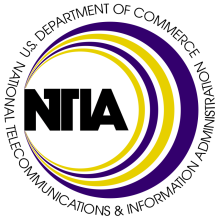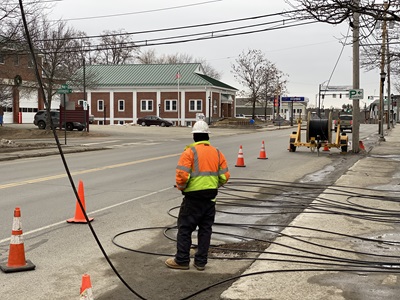
Fast, affordable Internet access for all.

The National Telecommunications and Information Administration (NTIA) recently announced it has created a “programmatic waiver” that offers alternatives to the much-criticized letter-of-credit (LOC) requirement buried in the BEAD program.
The announcement comes after hearing from a coalition of public interest groups and a chorus of broadband experts that the LOC requirement would effectively shut out smaller ISPs from participating in the national effort to expand high-speed Internet access.
When the bipartisan infrastructure law was passed in 2021, establishing the $42.5 billion BEAD program, the NTIA issued a Notice of Funding Opportunity (NOFO) that detailed the spending rules for BEAD grants. Designed to ensure Internet service providers (ISPs) did not take federal grant dollars and leave a project incomplete, the LOC requires BEAD grant applicants to provide a letter-of-credit from a bank that verifies the applicant has at least 25% of the grant dollar amount in cash reserves held in a bank account for the entire time it takes to complete a network build.

As noted by Connect Humanity’s Calum Cameron, for the bulk of ISPs who do not have the deep pockets of the biggest cable and telecom companies, the LOC requirement would needlessly shut out “small and community-centered ISPs, minority and women-owned businesses, nonprofits, and municipalities” – a barrier all the more counterproductive given that “these are the providers best positioned to connect un(der)-served Americans.”
Connect Humanity, the American Association for Public Broadband (AAPB), the Institute for Local Self-Reliance (ILSR) – along with more than 300 community leaders, independent ISPs, broadband experts, and public interest groups – co-signed a letter sent to NTIA in September explaining how the LOC threatened to undermine the effectiveness of the BEAD program.
The letter suggested alternatives to the LOC that would provide safeguards and allow smaller ISPs and non-traditional providers to meaningfully participate in the BEAD program. Taking those suggestions to heart, the NTIA waiver modifies the LOC requirement in four ways.
As detailed by the leading telecommunications law firm Keller & Heckman, the waiver:
- “Allows the Use of Performance Bonds. The waiver permits a subgrantee to provide a performance bond equal to 100% of the BEAD subaward amount in lieu of a letter of credit, provided that the bond is issued by a company holding a certificate of authority as an acceptable surety on federal bonds as identified in the Department of Treasury Circular 570. [iii][iv].”
- “Allows Credit Unions to Issue LOCs. The NOFO requires subgrantees to obtain a LOC from a U.S. bank with a safety rating issued by Weiss of B− or better. The waiver permits subgrantees to fulfill the LOC requirement (or any alternative permitted under the waiver) by utilizing any United States credit union that is insured by the National Credit Union Administration and that has a credit union safety rating issued by Weiss of B− or better.”
- “Allows Eligible Entities to Reduce the Obligation Upon Completion of Milestones. The waiver allows an Eligible Entity (a state or territory recipient of funding allocation from NTIA) to reduce the amount of the letter of credit obligation below 25% over time or reduce the amount of the performance bond below 100% over time, upon a subgrantee meeting deployment milestones specified by the state or territory.”
- “Allows for an Alternative Initial LOC or Performance Bond Percentage. The NOFO requires that the initial amount of the letter of credit be 25% of the subaward (or the initial amount of the performance bond be 100% of the subaward under the option described above). The programmatic waiver allows the initial amount of the letter of credit or performance bond to be 10% of the subaward amount during the entire period of performance when an Eligible Entity issues funding on a reimbursable basis consistent with Section IV.C.1.b of the NOFO, and reimbursement is for periods of no more than six months each. Given the likelihood that Eligible Entities will extensively employ a reimbursement approach, this alternative is particularly significant.”
The waiver is also good news particularly for local and state governments looking to invest in municipal broadband projects or public-private partnerships.
The NTIA waiver also stipulates that “states and territories are also free to request waivers for additional circumstances not covered by this programmatic waiver where prospective subgrantees are able to meet the requirements under the NOFO by other means,” as the administration recognizes that “achieving ‘Internet for All’ requires a whole-of-nation approach at every step, and we will continue to collaborate as we implement this historic initiative.”

Score a victory for community broadband and independent ISPs. As noted by Keller & Heckman partner Sean Stokes:
“NTIA’s programmatic waiver appears to provide much-needed relief and flexibility for potential BEAD subgrantees who might otherwise have been precluded from fully participating in the BEAD program,” he wrote.
AAPB Executive Director Gigi Sohn succinctly summarized why the waiver matters in a social media post:
“These alternatives will allow the broadband providers most willing to serve the most rural and poorest parts of our country to obtain funding to help close the digital divide. It's a very weedy issue, but a critical one if this money is going to connect every US household.”
